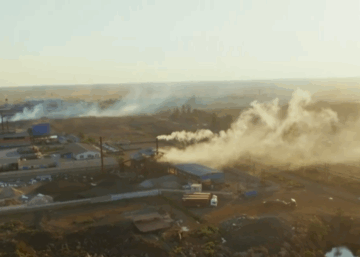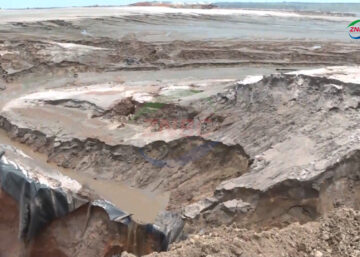Status: Open Case (Red Flag)
Last updates
- SAFAL keeps operating in Serenje.
- Dec 2024: Centre for Environment Justice (CEJ) urges the government to suspend SAFAL’s operations until safety rules are followed, workers get access to medical reports, critically ill victims are evacuated for specialized care.
- 2022: Acting Minister of Health Hon. Brenda Tambatamba, MP announced in Parliament the outbreak of cases of ‘manganism’ concerning SAFAL employees, with 28 severe cases and 271 employees out of 281 having blood levels of manganese above the normal level.
Concerns
- Disease known as ‘manganism’
- Soil and water contamination, reduced crop yield and deforestation
- Lack of compliance with occupational health, safety and environmental standards by companies
- Poor monitoring and regulation enforcement by oversight bodies
- Limited community awareness and engagement on health risks
- Alleged maladministration and bribery
- Poor compensation to affected workers
Context
The manganese mining industry holds considerable economic importance for Zambia. Zambia currently ranks as the 12th largest exporter in the world, with the main export markets being China, South Africa, Mauritius, and India. With the rise in global demand, manganese mining has substantially developed in Serenje and Chitambo districts, as well as in other districts around Zambia, and has brought with it positive expectations for economic growth and job creation.
While the manganese mining industry has benefitted extractive communities, it can also pose significant threats to human health and the environment. “Manganese, an essential nutrient in small quantities, becomes toxic when present in excessive amounts and can have detrimental impacts on various organ systems. Manganese toxicity can result in a permanent neurological disorder known as ‘manganism’ with symptoms that include tremors, difficulty walking, and facial muscle spasms. It can also lead to respiratory issues, hepatic and renal dysfunction, and reproductive health issues” (Centre for Environment Justice, 2023). The most affected individuals tend to be mineworkers and factory workers, but also the communities living near mining and processing facilities.
In terms of the adverse environmental impact of manganese, research has documented that excessive quantities of manganese, especially through the improper disposal of mining waste, lead to soil contamination, water pollution and ecosystem disruptions. This in turn may trigger deforestation and reduce crop yields.
Unfortunately, this ‘potential threat’ became very evident in 2022 in Serenje and Chitambo districts, when whistleblowers alerted authorities at first, and then the Centre for Environment Justice about the outbreak of a mysterious disease affecting mine workers.
A CEJ-led investigation found that “a permanent brain-damaging health condition with symptoms similar to Parkinson’s disease had hit about 28 workers at Indian-owned manganese processing company known as Southern Africa Ferro Alloys Limited (SAFAL). However, what was striking is that even after government was informed of the situation the company was still operating and no punitive actions were taken against the company” (CEJ, 2023).
Following advocacy efforts by CEJ, in September 2022 Hon. Brenda Tambatamba, MP, on behalf of the Minister of Health, announced in Parliament that the outbreak was caused by manganese poisoning. 271 employees out of 281 had blood levels of manganese above the normal level, facing long-term risks from exposure to toxic chemicals. In light of this finding, Tambatamba announced the constitution of a Joint Inspection Team to undertake a full investigation of the risk assessment at SAFAL as well as at all manganese processing plants nationwide, to ensure compliance to laws and regulations.
One year later, in December 2024, CEJ held a press briefing to update the public on progress on the case. Unfortunately, the number of workers suffering from severe health problems went up to 35. While SAFAL proceeded to compensate affected mine workers, community members maintain that the compensation packages are coming short of providing the needed support. There is no transparency around the compensation, and they allegedly do not cover for the negative impact on families’ livelihoods. Community members are not happy with the solution, given that many are now permanently disabled because of manganism.
Today, SAFAL keeps operating in Serenje.
Waving the Red Flag
The Serenje manganese poisoning case highlights some extremely concerning facts and shortcomings that Zambia needs to address.
- Significant gaps in public health, and safety for mine workers and environmental protection. In the words of CEJ Executive Director Maggie Mwape, “yes, we need those investors, but we want responsible investors who respect our laws and benefit our communities”. Investors should minimize health risks to communities by safeguarding workers’ safety, providing needed equipment to workers and healthcare services (which were found by the investigation to be insufficient). Moreover, mining operations and mining waste disposal should be conducted in a way that they do not affect the surrounding environment.
- Weak enforcement of laws and regulations: regulatory bodies such as the Mines Safety Department under the Ministry of Mines need to carry out regular inspections on the ground to assess operators’ compliance with occupational health and safety regulations and environmental standards and investigate shortcomings.
- Limited community’s awareness: Local residents were largely unaware of the dangers entailed by manganese mining and were unwittingly exposed to high levels of manganese. Operations such as manganese mining must require proper sensitization work to minimize the risks for community members. Residents need to be fully aware of any possible risk before accepting such operations to take place in their communities.
- : There was manifest maladministration in the way regulatory bodies and law enforcement agencies failed to monitor mining operations and enforce sanctions, even after the issue was reported to authorities. Moreover, according to residents, the local labour office was completely useless in addressing the issue and defending workers’ rights. Some residents also allege that health facilities checking mineworkers affected by ‘manganism’ were bribed to minimize the health risk miners were exposed to or failed to report the linkage with the mining operations.
- Unsatisfying compensation to affected workers and community members.
- There is widespread illegal mining around the district, which could further contribute to negative health and environmental consequences, given the lack of safety precautions for artisanal miners (Serenje Council).
Sources:
- Centre for Environment Justice (CEJ) (2023). Managanese Toxicity : A summary Report on Manganese Poisoning in Serenje District. Manganese toxicity
- RISE: Manganese Toxicity in Serenje, Zambia
- Manganese Toxicity in Serenje, Zambia
- CEJ Urges Action on Serenje Manganese Poisoning Crisis – Efficacy News
- CEJ tackles Southern Africa Ferro Alloys for alleged health violations, demands workers’ compensation | Zambia Monitor
Figure 1, source: Serenje Council.








